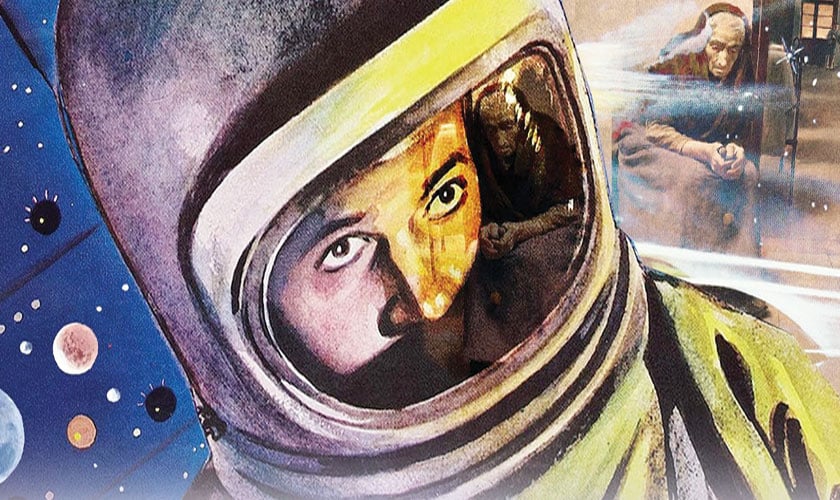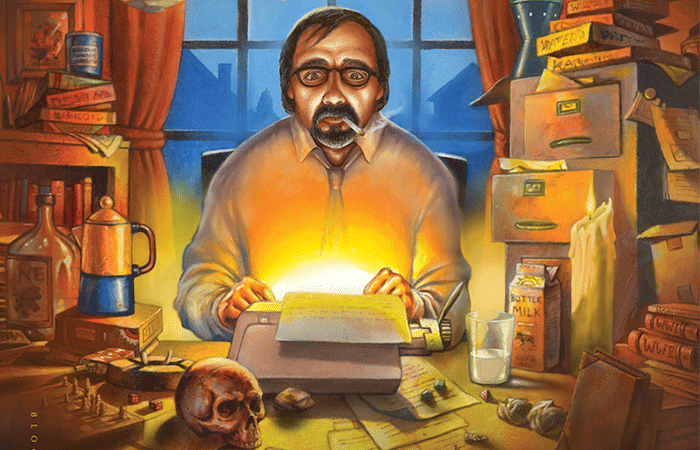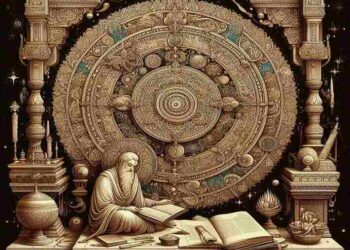Table of Contents
ToggleIntroduction
Exploring The Science In Science Fiction With its future settings, cutting-edge technology, and extraterrestrial cultures, science fiction frequently blurs the boundaries between imagination and reality. Unquestionably popular, it has influenced everything from popular culture and video games to literature and film. Science fiction’s distinctive fusion of narrative and speculative science is what makes it so captivating.
Fundamentally, science fiction is an intellectual playground that explores the possible ramifications of social evolution, technological advancement, and human nature while pushing the boundaries of what science is capable of.
Science fiction has always had a strong foundation in the sciences, despite the fact that it is frequently perceived as a domain of fantasy and imagination. In order to produce captivating, thought-provoking stories, authors frequently push the limits of accepted science and base their futuristic worlds on the most recent scientific discoveries.
Important conversations concerning the possibilities of human progress, the ethical ramifications of scientific discoveries, and the future of technology have been spurred by this complex link between science and fiction.
The Origins of Science Fiction
It’s crucial to first examine the history of science fiction in order to comprehend its function. Despite being a contemporary invention, science fiction has origins in early scientific literature, ancient mythology, and the writings of trailblazing Renaissance and Enlightenment intellectuals.
The ancient fable of Daedalus and Icarus, in which Daedalus makes wings for his son Icarus to escape imprisonment, is one of the first examples of science fiction. However, Icarus ends up dying after flying too close to the sun. An early examination of human desire, the boundaries of knowledge, and the possible risks of technological growth may be found in this novel.
Read more
Through their investigations of space, gravity, and motion as well as their studies of the natural world, intellectuals such as Gottfried Wilhelm Leibniz, Johannes Kepler, and Isaac Newton established the theoretical foundation for science fiction in the 17th and 18th centuries. Their ideas served as the scientific foundation for later fiction that would examine interstellar travel, space exploration, and futuristic technology.
But science fiction didn’t start to stand out as a separate genre until the 19th century. The speculative theories of their era were converted into imaginative fiction that blended science, technology, and human emotions by authors such as Mary Shelley, Jules Verne, and H.G. Wells.
One of the first pieces of science fiction is Mary Shelley’s Frankenstein (1818), which examines the moral and ethical conundrums raised by scientific experimentation. By providing readers with a fantastical look at underwater exploration and extraterrestrial life, Jules Verne’s Twenty Thousand Leagues Under the Sea (1870) and H.G. Wells’ The War of the Worlds (1898) challenged the state of science at the time.
These early works, which provide both amusement and intellectual difficulties, laid the groundwork for the union of science fiction and science. In the 20th century, authors such as Philip K. Dick, Ursula K. Le Guin, Arthur C. Clarke, and Isaac Asimov developed new worlds, ideas, and technology that were both speculative and anchored in science.

The Science Behind Science Fiction: A Closer Look
One of the most fascinating aspects of science fiction is how it bridges the gap between what is scientifically possible and what is not—at least not yet. The genre often explores scientific ideas that are based on real scientific theories or principles but takes them to new heights, often speculating on what might happen in the future or in an alternate reality. Let’s explore some key areas where science fiction and science intersect.
1. Space Exploration and the Cosmos
The exploration of space is perhaps the most iconic element of science fiction. From Star Trek and 2001: A Space Odyssey to The Expanse, many works of science fiction speculate on humanity’s future in space. While many of these portrayals are fantastical, they are rooted in real scientific principles related to space travel, physics, and cosmology.
One of the key scientific ideas that underpins space exploration in science fiction is the concept of faster-than-light (FTL) travel. In works like Star Trek, FTL travel is made possible through the “warp drive,” a hypothetical mechanism that allows a spacecraft to travel faster than the speed of light by warping the fabric of spacetime. While this concept is far from being realized in reality, it is based on the theory of general relativity, which describes how massive objects like stars and planets warp spacetime.
In contrast to the more fantastical depictions of FTL travel, some science fiction works take a more realistic approach to space travel. The Martian by Andy Weir, for example, is grounded in contemporary scientific knowledge, using real-world physics, chemistry, and biology to tell the story of an astronaut stranded on Mars. Weir’s attention to scientific detail and realistic depiction of space exploration has been praised for bringing the audience closer to the possibility of manned missions to Mars in the near future.
2. Artificial Intelligence and Robotics
Artificial intelligence (AI) and robotics have long been central themes in science fiction, from Isaac Asimov’s I, Robot to the film Ex Machina. These works explore the potential and dangers of creating machines that can think, learn, and act independently. Many of these stories raise important ethical questions about the relationship between humans and machines, the potential for AI to surpass human intelligence, and the consequences of creating entities that can challenge human authority.
In I, Robot, Asimov introduces his famous Three Laws of Robotics, which are designed to ensure that robots act in ways that are safe and beneficial for humans. These laws have been highly influential in discussions about AI ethics, and while we are still far from creating robots with true artificial intelligence, the field of robotics and AI research continues to evolve, with companies like Boston Dynamics and Elon Musk’s Neuralink working on groundbreaking technologies.
The concept of AI taking on human-like qualities is explored in Blade Runner, based on Philip K. Dick’s novel Do Androids Dream of Electric Sheep?. Here, AI is not just a tool, but an entity capable of experiencing emotions, raising questions about personhood, consciousness, and morality. As AI technology advances, science fiction’s speculative exploration of these issues continues to resonate with real-world debates about the future of intelligent machines.
3. Genetics and Biotechnology
Genetics and biotechnology have also been fertile ground for science fiction. In works like Michael Crichton’s Jurassic Park, genetic engineering is used to bring extinct creatures back to life, creating both awe and terror as humans grapple with the consequences of manipulating nature. The idea of genetic modification—whether to cure diseases, enhance human abilities, or create entirely new life forms—is a central theme in both science fiction and contemporary scientific discourse.
Biotechnological advances, such as CRISPR-Cas9, a gene-editing technology that allows scientists to alter DNA with unprecedented precision, have made many of these science fiction scenarios seem closer to reality. While the ethical implications of such technology remain hotly debated, works like Gattaca explore the dystopian potential of a future where genetic engineering is used for social control and discrimination.
Additionally, the idea of “designer babies” or genetically modified humans has been explored in numerous science fiction novels and films, raising questions about the ethical boundaries of science and technology. As we continue to make advancements in genetic engineering, the concerns and questions raised by science fiction writers will only become more relevant.
4. Time Travel and Parallel Universes
Time travel is another popular trope in science fiction, with classics like The Time Machine by H.G. Wells and films like Back to the Future exploring the concept of traveling through time. While time travel remains firmly in the realm of speculation, theories from physics—such as the idea of wormholes and alternate dimensions—have made the concept a bit more scientifically plausible in fiction.
Theories such as Einstein’s general theory of relativity suggest that time and space are interconnected, and under certain conditions, time travel might be possible. While we have no concrete evidence of time travel being achievable, science fiction frequently explores the paradoxes and challenges associated with it, such as the “grandfather paradox,” in which a time traveler might inadvertently alter history in ways that create contradictions.
Parallel universes, or the idea of multiple realities existing simultaneously, is another area where science fiction intersects with speculative science. Quantum mechanics, with its probabilistic nature and the theory of multiverses, has inspired many science fiction writers to explore alternate realities and parallel worlds. Works like The Man in the High Castle by Philip K. Dick and the Dark series on Netflix delve into the complexities of alternate histories and parallel timelines, exploring the consequences of changes in past events.
Read more
5. Environmental Science and Climate Change
Many science fiction stories also explore the environmental consequences of human activity, often imagining dystopian futures where climate change, overpopulation, and resource depletion have devastated the planet. From The Road by Cormac McCarthy to Mad Max: Fury Road, science fiction presents a world where environmental degradation has led to a breakdown of social order and human survival.
The growing awareness of climate change in the real world has made these kinds of speculative scenarios increasingly relevant. Science fiction works often serve as cautionary tales, urging readers to consider the long-term consequences of our actions on the environment. Similarly, they present solutions, such as advanced technologies or sustainable energy systems, that may offer hope for the future.
The Impact of Science Fiction on Science and Technology
One of the most remarkable aspects of science fiction is its ability to inspire real-world scientific progress. Many scientific breakthroughs were once imagined in the pages of science fiction novels long before they became a reality. For example, concepts like space travel, communication satellites, and virtual reality were all depicted in science fiction before they became part of everyday life.
The communication device used by Captain Kirk in Star Trek—the communicator—bears a striking resemblance to modern-day flip phones, and many scientists credit Star Trek with inspiring the development of mobile communication technology. Similarly, the concept of automated cars, which is frequently explored in science fiction, is now being tested in the real world by companies like Tesla and Google.
Science fiction also plays a significant role in shaping the public’s understanding of science. By presenting complex scientific concepts in an engaging and accessible way, science fiction can spark curiosity and interest in STEM fields, encouraging young people to pursue careers in science, technology, engineering, and mathematics.

Conclusion
Science fiction is not just a genre for escapism; it is a powerful tool for exploring the potential of science, technology, and human progress. Through imaginative storytelling, science fiction speculates on the future of space exploration, artificial intelligence, genetics, time travel, and the environment. It asks profound questions about ethics, society, and the consequences of technological advancement, often providing a window into possible futures—both utopian and dystopian.
While many of the technologies and concepts featured in science fiction remain speculative, the genre has inspired real-world scientific inquiry and innovation. By blurring the line between reality and imagination, science fiction continues to challenge our understanding of the world and encourages us to think critically about the path humanity is on.
Read more
FAQs
1. Is science fiction purely speculative?
No, science fiction often incorporates real scientific principles and explores their potential applications, both in the near future and in speculative settings. Many works of science fiction are grounded in existing scientific theories, though they may extrapolate them to imagine new technologies or future worlds.
2. Can science fiction predict the future?
While science fiction cannot predict the future with certainty, it often serves as a lens through which we can explore the implications of emerging scientific trends. Some science fiction ideas, such as space exploration and artificial intelligence, have inspired real-world scientific innovations.
3. How does science fiction influence real-world science?
Science fiction has historically influenced scientific progress by presenting ideas and technologies that inspire scientists and engineers. Concepts like space travel, robotics, and communication satellites were first imagined in science fiction before becoming part of our everyday lives.
4. Is time travel scientifically possible?
Currently, time travel remains a theoretical concept, with no practical means of achieving it. However, theories from physics, such as those involving wormholes or the theory of relativity, suggest that time travel could, in theory, be possible under certain conditions, though the practicalities remain speculative.
5. Can science fiction inspire ethical debates about technology?
Yes, many science fiction works delve into the ethical implications of technological advancements, particularly in fields like artificial intelligence, genetic engineering, and environmental destruction. These narratives encourage readers to think critically about the consequences of new technologies and their impact on society.
















